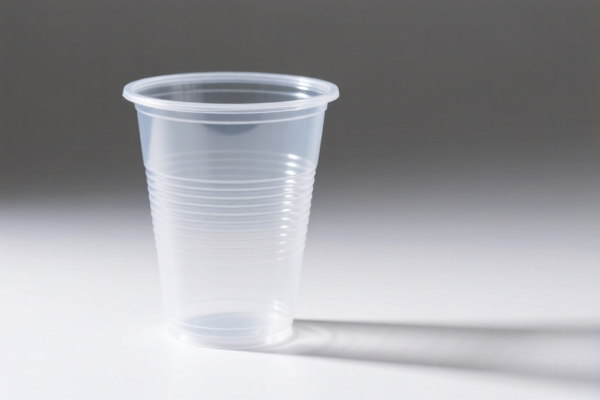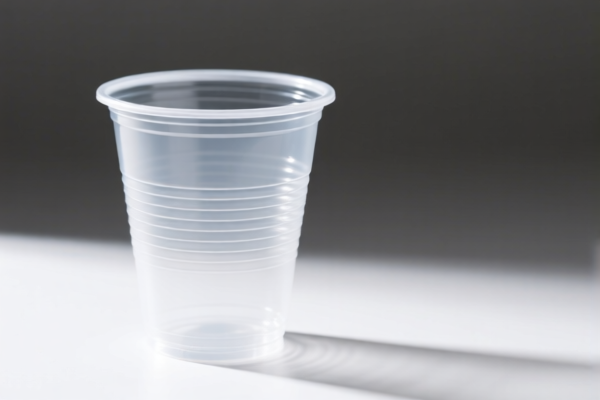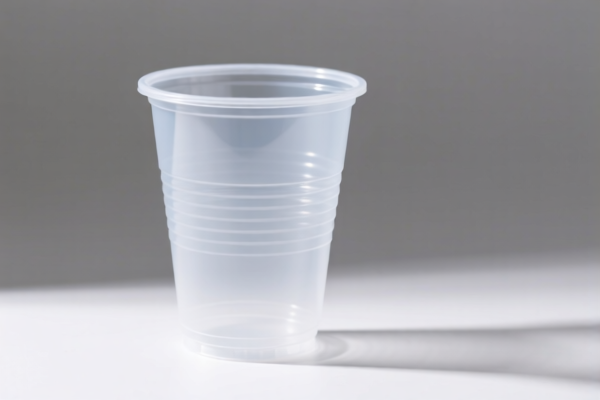| HS Code | Official Doc | Tariff Rate | Origin | Destination | Effective Date |
|---|---|---|---|---|---|
| 3923300010 | Doc | 58.0% | CN | US | 2025-05-12 |
| 3921904090 | Doc | 34.2% | CN | US | 2025-05-12 |
| 3924104000 | Doc | 33.4% | CN | US | 2025-05-12 |
| 3926909989 | Doc | 42.8% | CN | US | 2025-05-12 |
| 3923300090 | Doc | 58.0% | CN | US | 2025-05-12 |




Here is the structured classification and tariff information for plastic cups, based on the provided HS codes and tax details:
📦 Product: Plastic Cup
🔍 Classification Overview:
- HS CODE: 3923300010
- Description: Plastic cups classified as transport or packaging items, with capacity not exceeding 50 ml, such as bottles, jars, and similar items.
- Total Tax Rate: 58.0%
-
Breakdown:
- Base Tariff: 3.0%
- Additional Tariff: 25.0%
- April 11, 2025 Special Tariff: 30.0% (applies after April 11, 2025)
-
HS CODE: 3921904090
- Description: Plastic cups classified as flexible plastic products.
- Total Tax Rate: 34.2%
-
Breakdown:
- Base Tariff: 4.2%
- Additional Tariff: 0.0%
- April 11, 2025 Special Tariff: 30.0% (applies after April 11, 2025)
-
HS CODE: 3924104000
- Description: Plastic cups classified as tableware, kitchen utensils, or other household items.
- Total Tax Rate: 33.4%
-
Breakdown:
- Base Tariff: 3.4%
- Additional Tariff: 0.0%
- April 11, 2025 Special Tariff: 30.0% (applies after April 11, 2025)
-
HS CODE: 3926909989
- Description: Plastic cups classified as other items.
- Total Tax Rate: 42.8%
-
Breakdown:
- Base Tariff: 5.3%
- Additional Tariff: 7.5%
- April 11, 2025 Special Tariff: 30.0% (applies after April 11, 2025)
-
HS CODE: 3923300090
- Description: Plastic folding cups classified as transport or packaging items.
- Total Tax Rate: 58.0%
- Breakdown:
- Base Tariff: 3.0%
- Additional Tariff: 25.0%
- April 11, 2025 Special Tariff: 30.0% (applies after April 11, 2025)
⚠️ Important Notes:
- April 11, 2025 Special Tariff: A 30.0% additional tariff will be applied to all the above HS codes after April 11, 2025. This is a time-sensitive policy and must be considered in your customs planning.
- Anti-dumping duties: Not applicable for plastic cups in the current context.
- Material and Certification: Verify the material composition (e.g., polyethylene, polystyrene) and unit price to ensure correct classification. Some HS codes may require specific certifications (e.g., food-grade, safety standards) for import compliance.
✅ Proactive Advice:
- Confirm the exact product type (e.g., folding, reusable, single-use, food-grade) to ensure the correct HS code is used.
- Check for any additional duties based on trade agreements or bilateral policies.
- Review the April 11, 2025 deadline to avoid unexpected cost increases.
- Consult with a customs broker or regulatory authority if the product is used for food or pharmaceutical purposes.
Let me know if you need help determining the most suitable HS code for your specific product. Here is the structured classification and tariff information for plastic cups, based on the provided HS codes and tax details:
📦 Product: Plastic Cup
🔍 Classification Overview:
- HS CODE: 3923300010
- Description: Plastic cups classified as transport or packaging items, with capacity not exceeding 50 ml, such as bottles, jars, and similar items.
- Total Tax Rate: 58.0%
-
Breakdown:
- Base Tariff: 3.0%
- Additional Tariff: 25.0%
- April 11, 2025 Special Tariff: 30.0% (applies after April 11, 2025)
-
HS CODE: 3921904090
- Description: Plastic cups classified as flexible plastic products.
- Total Tax Rate: 34.2%
-
Breakdown:
- Base Tariff: 4.2%
- Additional Tariff: 0.0%
- April 11, 2025 Special Tariff: 30.0% (applies after April 11, 2025)
-
HS CODE: 3924104000
- Description: Plastic cups classified as tableware, kitchen utensils, or other household items.
- Total Tax Rate: 33.4%
-
Breakdown:
- Base Tariff: 3.4%
- Additional Tariff: 0.0%
- April 11, 2025 Special Tariff: 30.0% (applies after April 11, 2025)
-
HS CODE: 3926909989
- Description: Plastic cups classified as other items.
- Total Tax Rate: 42.8%
-
Breakdown:
- Base Tariff: 5.3%
- Additional Tariff: 7.5%
- April 11, 2025 Special Tariff: 30.0% (applies after April 11, 2025)
-
HS CODE: 3923300090
- Description: Plastic folding cups classified as transport or packaging items.
- Total Tax Rate: 58.0%
- Breakdown:
- Base Tariff: 3.0%
- Additional Tariff: 25.0%
- April 11, 2025 Special Tariff: 30.0% (applies after April 11, 2025)
⚠️ Important Notes:
- April 11, 2025 Special Tariff: A 30.0% additional tariff will be applied to all the above HS codes after April 11, 2025. This is a time-sensitive policy and must be considered in your customs planning.
- Anti-dumping duties: Not applicable for plastic cups in the current context.
- Material and Certification: Verify the material composition (e.g., polyethylene, polystyrene) and unit price to ensure correct classification. Some HS codes may require specific certifications (e.g., food-grade, safety standards) for import compliance.
✅ Proactive Advice:
- Confirm the exact product type (e.g., folding, reusable, single-use, food-grade) to ensure the correct HS code is used.
- Check for any additional duties based on trade agreements or bilateral policies.
- Review the April 11, 2025 deadline to avoid unexpected cost increases.
- Consult with a customs broker or regulatory authority if the product is used for food or pharmaceutical purposes.
Let me know if you need help determining the most suitable HS code for your specific product.
Customer Reviews
The page is helpful, but I wish the images of the plastic cups were clearer. Still, the HS code and tariff info for 3926909989 was exactly what I needed.
I was looking for the right HS code for plastic folding cups, and this page has the perfect match with 3923300090. The detailed tariff breakdown is a lifesaver!
The info on HS code 3921904090 with a 34.2% tariff was exactly what I needed. The breakdown of the tax components made it easier to plan for my exports.
Clear breakdown of HS code 3923300010 and the 58.0% tariff rate. Very helpful for understanding the special April 11, 2025 tariff.